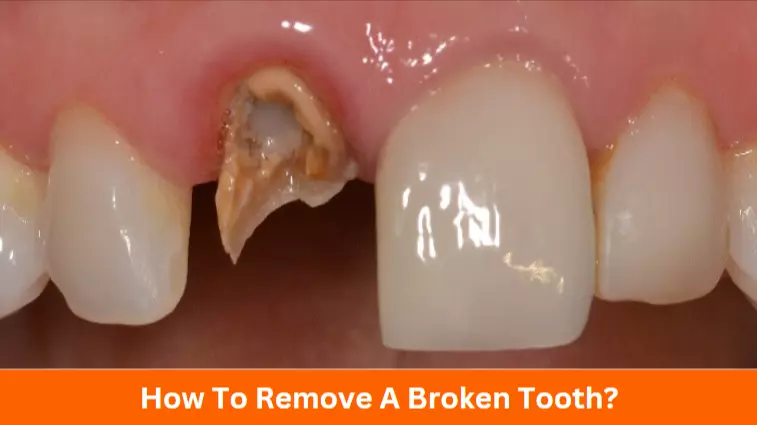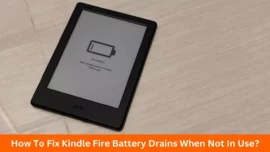Are you also having a broken tooth and looking for how to remove a broken tooth?
If yes, then you’re at the right place!
Broken tooth creates a lot of problems in the mouth and sometimes the pain is also unbearable. Thus, it is better to remove the tooth safely. Thus in this article, we have mentioned the safest dentist’s suggested way to remove the tooth from the socket.
Let’s start with the 6 simple steps to get the tooth broken off at gum line, no pain !!
Table of Contents
Use the Surgical Extraction To Remove Your Broken Tooth
If you have a broken tooth root still in the gum, then only a surgical extraction can get you out of this dilemma and its pain. In any of the surgical extraction, there are several simple steps you need to follow:
Step – 1: Numbing The Tooth
Any tooth extractions initiated with the shot of anesthetics for tooth, gum and tissue. It will help you feel no pain and pressure of extractions. However, you will feel the pain of the needle, depending upon the type of tissue, in which you have got the anesthetics.
Anesthetics shot is basically given in three steps only:
- Firstly, Dentists insert the needle. It won’t create any pain for you
- Then, they place the needle into a particular tissue where the anesthetic is required. You might feel some discomfort. However, your dentist will tell you how to overcome it
- Once the needle is placed properly, they will deposit the anesthesia solution in your tissue
Step – 2: Extraction of Tooth
In the extraction of teeth, you have to pull the teeth from the socket (jawbone), where it is placed because of the ligament. Thus, before removing the tooth, Doctors need to enlarge the socket to separate the ligaments from the tooth.
The tooth root encased bone of the tooth is spongy. Thus, when you rock the tooth back and forth, it compresses the bone. It will lead your tooth to get enough space and get easily out of the socket.
Therefore, Dentists use the extraction forceps and elevators to put pressure on the tooth to remove them.
- Extraction Forceps
It is a kind of plier-like instrument, which helps in grasping and pulling the teeth. Thus, dentists generally have several extraction forceps. Each of them is of an exact tooth shape, which directly applies the pressure over the tooth. In fact, they can help rotate the tooth back and forth to easily tear it away.
- Dental Elevators
They are a kind of small screwdriver, which goes in between the tooth and its surrounding bones and tissues. This elevator creates a force in space and puts pressure on the tooth in the opposite direction of bone.
This is how dentists expand the socket and remove the tooth from its ligament. At the time of extraction, anesthetic helps in conking out the nerve fiber that transmits the pain. However, you will feel the sensation of pressure.
Step – 3: Closing The Space Vacated By Tooth
When your dentist will finally remove the tooth from your socket. It will leave the socket open. It is essential to close the socket now, and we have mentioned some of the commonly used ways to close the tooth socket.
- Primarily, your dentist will check and scrap the infected and pathologic tissue covering the walls of the socket. In fact, he/she might also compress your socket with his/her fingertips
- Your dentist will also round off the sharp bone edge and check out the socket for any sinus complexes, especially in the case of upper back tooth
- Then, he will proceed with washing your tooth fragment and loose bones
- Dentists might also need to use the gauze to control the bleeding of the socket
- Dentist will mostly stitch up your extraction, especially if some of the tooth extraction has been removed in a row
Step – 4: Controlling Bleeding
Oftentimes after the extraction, dentists have to put the folded gauze over the tooth extraction site and will make you bite down there to control the bleeding. It might even take around an hour to control the bleeding.
Step – 5: Minimizing The Swelling
Post-operative swelling is one of the very common issues after a dental surgery. Thus, your dentist might provide an ice pack to put against your face.
Step – 6: Post Extraction Care
After removing a tooth, it will take a few days to recover. However, you need to stay with some extra care to be safe from the infection, and minimize any kind of infection. These care will also speed up your recovery rate.
There are certain tips to take care after the extraction:
- While biting on the gauze pad, remember to be gentle and firm to let a clot form in the socket. Also frequently change your gauze before letting them completely soaked in the blood
- Take your painkillers on time
- After your tooth extraction, take a proper rest for at least 24 hours. Even avoid forceful spitting and rinsing your mouth, otherwise it might dislodge the clot in the socket
- Even avoid consuming any beverage from the straw
- Avoid smoking for some days to let the socket heal properly
- Go for only soft food items including soups, yogurt, pudding, and applesauce for some days after extraction
- After 24 hours, wash your mouth with 8 ounce warm water and ½ teaspoon full of salt
- Make sure to prop your head with the pillow when lying down to not prolong any bleeding
- Do not even try to brush or floss your extraction site
Final Words
These are 6 simple steps of how to remove a broken tooth. Follow these simple steps and also make sure that your dentist won’t miss any of these steps. We hope you like this guide and find the best possible way to remove your tooth from the socket without any pain.
Related Article:






